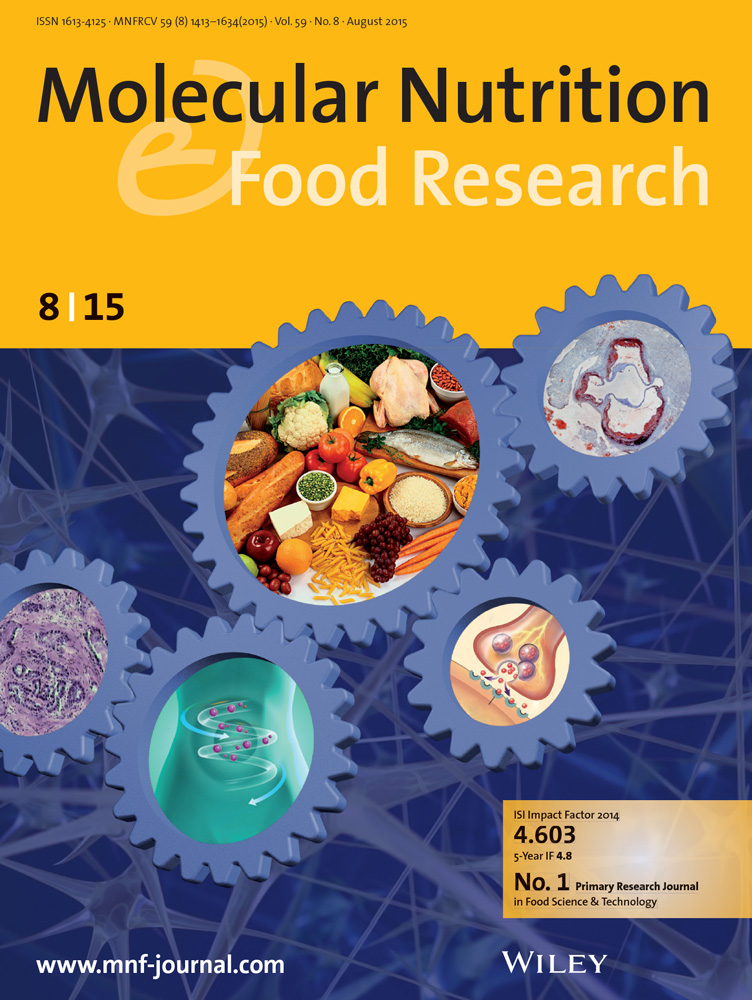Effect of the Chilean Bean Landrace Peumo on Metabolic Syndrome‐Related Parameters in C57BL/6 Mice Fed With a High‐Fat Diet
IF 4.5
2区 农林科学
Q1 FOOD SCIENCE & TECHNOLOGY
引用次数: 0
Abstract
Scope: We report a nutritional intervention involving supplementation with boiled beans and secondary metabolites‐enriched extracts (SMEEs) from a Chilean智利土豆豆Peumo对饲喂高脂饮食的C57BL/6小鼠代谢综合征相关参数的影响
范围:我们报道了一项营养干预,包括补充煮熟的豆类和智利菜豆次生代谢物富集提取物(SMEEs),用于诱导代谢综合征(MS)小鼠。方法和结果:在高脂饮食诱导的多发性硬化症C57BL6小鼠中评估了补充剂的效果。每天给煮豆(动物日- 1 75和150 mg)和SMEE(动物日- 1 0.8和8 mg),持续4个月。每周测量体重和血糖。实验结束时,测定血浆中血糖、总胆固醇、高密度脂蛋白(HDL)和低密度脂蛋白(LDL)、甘油三酯、蛋白羰基和羧甲基赖氨酸(CML)水平。干预结束时口服SMEE可降低血糖。与对照组相比,煮熟的豆子在血糖水平上没有统计学上的显著差异。0.8 mg动物d - 1的SMEE降低了CML的总量,主要是分子质量为75 kDa的蛋白质,这与羰基化蛋白质的结果一致。结论:Peumo豆的SMEE在干预结束时降低血糖,降低血浆中总CML,提示豆类摄入可能具有有益作用。在干预中获得的结果鼓励了对智利地方豆品种的进一步研究。
本文章由计算机程序翻译,如有差异,请以英文原文为准。
求助全文
约1分钟内获得全文
求助全文
来源期刊

Molecular Nutrition & Food Research
工程技术-食品科技
CiteScore
8.70
自引率
1.90%
发文量
250
审稿时长
1.7 months
期刊介绍:
Molecular Nutrition & Food Research is a primary research journal devoted to health, safety and all aspects of molecular nutrition such as nutritional biochemistry, nutrigenomics and metabolomics aiming to link the information arising from related disciplines:
Bioactivity: Nutritional and medical effects of food constituents including bioavailability and kinetics.
Immunology: Understanding the interactions of food and the immune system.
Microbiology: Food spoilage, food pathogens, chemical and physical approaches of fermented foods and novel microbial processes.
Chemistry: Isolation and analysis of bioactive food ingredients while considering environmental aspects.
 求助内容:
求助内容: 应助结果提醒方式:
应助结果提醒方式:


